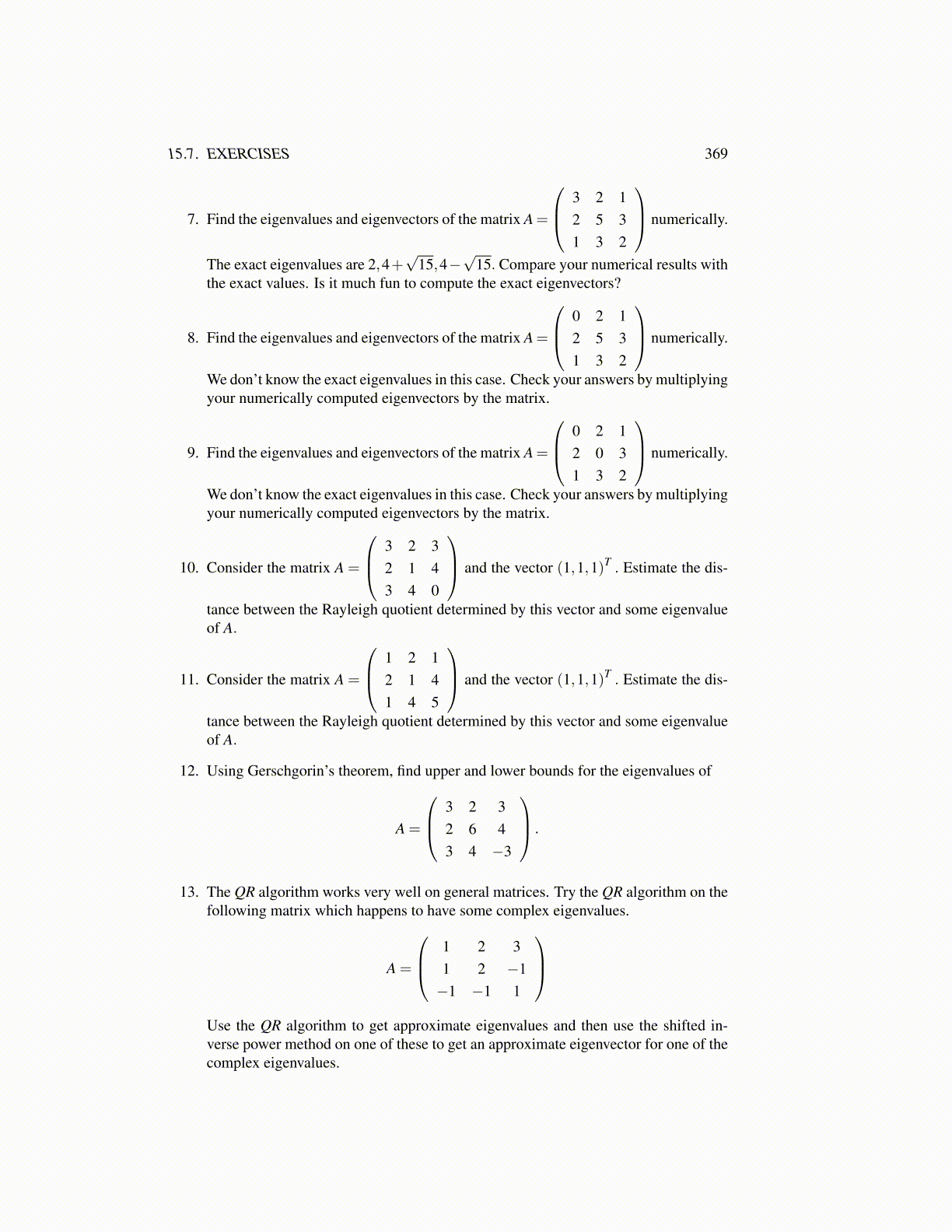
15.7. EXERCISES 369
7. Find the eigenvalues and eigenvectors of the matrix A=
3 2 12 5 31 3 2
numerically.
The exact eigenvalues are 2,4+√
15,4−√
15. Compare your numerical results withthe exact values. Is it much fun to compute the exact eigenvectors?
8. Find the eigenvalues and eigenvectors of the matrix A=
0 2 12 5 31 3 2
numerically.
We don’t know the exact eigenvalues in this case. Check your answers by multiplyingyour numerically computed eigenvectors by the matrix.
9. Find the eigenvalues and eigenvectors of the matrix A=
0 2 12 0 31 3 2
numerically.
We don’t know the exact eigenvalues in this case. Check your answers by multiplyingyour numerically computed eigenvectors by the matrix.
10. Consider the matrix A =
3 2 32 1 43 4 0
and the vector (1,1,1)T . Estimate the dis-
tance between the Rayleigh quotient determined by this vector and some eigenvalueof A.
11. Consider the matrix A =
1 2 12 1 41 4 5
and the vector (1,1,1)T . Estimate the dis-
tance between the Rayleigh quotient determined by this vector and some eigenvalueof A.
12. Using Gerschgorin’s theorem, find upper and lower bounds for the eigenvalues of
A =
3 2 32 6 43 4 −3
.
13. The QR algorithm works very well on general matrices. Try the QR algorithm on thefollowing matrix which happens to have some complex eigenvalues.
A =
1 2 31 2 −1−1 −1 1
Use the QR algorithm to get approximate eigenvalues and then use the shifted in-verse power method on one of these to get an approximate eigenvector for one of thecomplex eigenvalues.